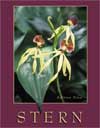1. There is evidence that all living organisms were confined to the
ocean less than 1 billion years ago. It is believed that green algae began making
the transition from water to land about 400 million years ago and gave rise
to land plants. 2. Kingdom Protista includes many diverse organisms that all have eukaryotic
cells. Members may be unicellular or multicellular and occur as either colonies
or filaments. Modes of nutrition include photosynthesis, ingestion of food,
a combination of both, or absorption of food in solution. Some members are nonmotile,
but most are motile. 3. Green algae (Chlorophyta) have cells with the same pigments and
reserve food (starch) as those of higher plants. The chloroplasts of Chlamydomonas
have pyrenoids; the cells have two or more vacuoles and often a red eyespot.
Asexual reproduction is by mitosis; sexual reproduction is isogamous. 4. Ulothrix is a filamentous green alga that may be attached
to objects by means of a holdfast; each cell contains a curved plate chloroplast
around the periphery. Asexual reproduction is by zoospores; sexual reproduction
is isogamous. 5. Spirogyra is a floating, filamentous green alga with spiral,
ribbonlike chloroplasts. Asexual reproduction is by fragmentation. Sexual reproduction
is by conjugation. 6. Oedogonium is an epiphytic, filamentous green alga; it has
cylindrical, netted chloroplasts. In asexual reproduction, zoospores are produced.
Sexual reproduction is oogamous. 7. Other green algae include Chlorella, desmids, Acetabularia,Volvox,Ulva, and Cladophora. 8. The several classes of Chromophyta include the yellow-green algae,
the true golden-brown algae, the diatoms, and the brown algae. Some members
produce statospores. 9. Diatoms are very abundant; they have a glassy shell that consists
of two "halves" that fit together like a box with a lid. 10. Fucoxanthin gives a golden-brown color to most chromophytes. Some
diatoms move by contact of the cytoplasm with a surface as it protrudes through
the pores. 11. Diatoms reproduce asexually by mitosis and sexually through the
fusion of gametes that form an auxospore (zygote). 12. Many brown algae (Phaeophyceae) are large seaweeds; their thalli
often may be differentiated into a stipe, flattened blades, and a holdfast. 13. The color of brown algae is largely due to fucoxanthin; the main
carbohydrate food reserve is laminarin. Some brown algae produce algin, a useful
gelatinous substance. The reproductive cells have lateral flagella. The common
rockweed, Fucus, produces eggs and sperms that form zygotes in the water. 14. Most red algae (Rhodophyta), represented by Polysiphonia,
are seaweeds with life cycles that involve three different types of thalli and
nonmotile gametes. 15. Red and blue phycobilins are partially responsible for the colors
of red algae; chlorophyll d may be present in the chloroplasts. The main
carbohydrate food reserve is floridean starch. Some red algae produce agar,
an economically important gelatinous substance. 16. Euglenoids (Euglenophyta) have no rigid cell wall, one functional
flagellum, a gullet, and paramylon as a carbohydrate food reserve. Reproduction
is by cell division. Sexual reproduction has not been confirmed. 17. Dinoflagellates (Dinophyta) are unicellular organisms with two
flagella inserted at right angles to each other. Some cause red tides that can
kill fish and poison humans. Dinoflagellates in tropical waters exhibit bioluminescence
(emission of light) when disturbed. 18. The cryptomonads (Cryptophyta) are biflagellated, unicellular algae
with two chloroplasts and an extra vesti-gial nucleus (nucleomorph). 19. Haptophytes (Prymnesiophyta) have biflagellated cells with a flagellumlike
haptonema that aids in the capture of food. 20. Stoneworts (Charophyta) are branched green organisms that superficially
resemble horsetails. 21. Algae are ecologically and economically important. Diatomaceous
earth is used for filtering, polishes, insulation, and reflectorized paint.
Chlorella is a potential food and oxygen source. Algin is used as a stabilizer
and thickening agent in hundreds of products. 22. Some brown algae are a source of fertilizer, iodine, and food.
Red algae are a source of agar and food and have potential medicinal value. 23. The plasmodial slime molds, which are animal-like in their vegetative
state, consist of a multinucleate mass of protoplasm called a plasmodium that
flows over damp surfaces, ingesting food particles. 24. Slime molds form stationary sporangia that contain spores from
which myxamoebae or swarm spores emerge upon germination. Myxamoebae or swarm
spores function as gametes, with new plasmodia developing from the zygotes. 25. Cellular slime molds produce a pseudoplasmodium that crawls like
a slug and can convert to a stationary, sporangium-like mass of spores. 26. Water molds have coenocytic mycelia and include organisms that
cause diseases of fish and other aquatic organisms. Asexual reproduction involves
zoospores; gametes are produced in oogonia and antheridia. | 


 2003 McGraw-Hill Higher Education
2003 McGraw-Hill Higher Education